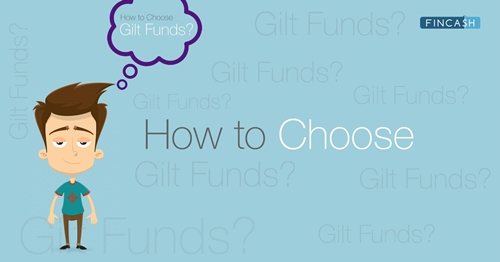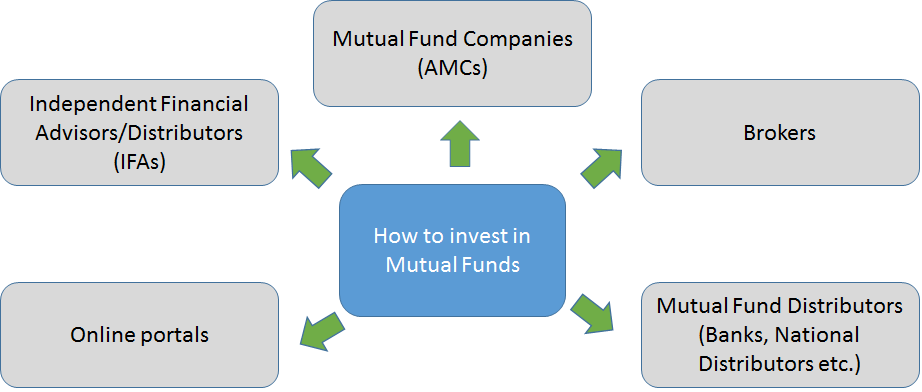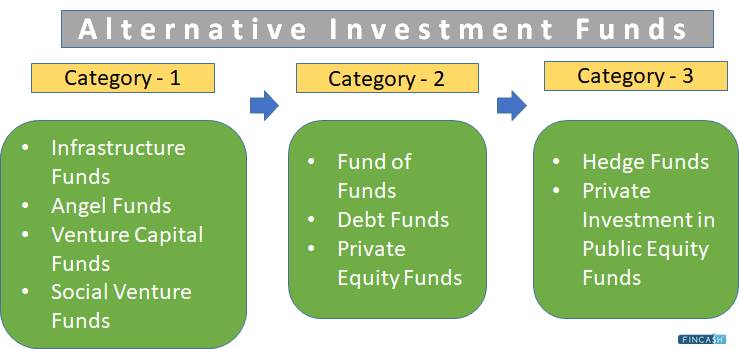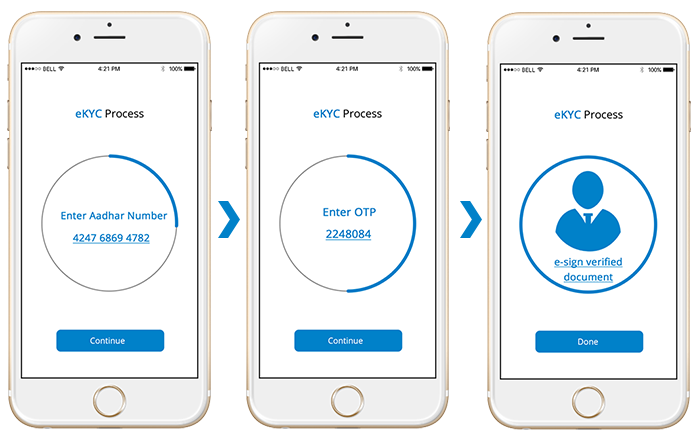
 +91-22-48913909
+91-22-48913909
Table of Contents
What are Gilt Funds? Should you Invest or Not?
As they say, the investment Market is full of opportunities, one simply needs to research and invest smartly. Gilt funds are an investment opportunity that you can consider to achieve both your long and short-term plan. It is one of those funds that has a blend of risk, return, and opportunity.

Gilt funds are a cyclical product—which turns with the Economic Conditions, but more so with interest rates. So, what is the right time to invest in these funds? Let’s have a closer look.
Defining Gilt Funds
Gilt funds are mutual fund schemes that predominantly invest in government securities (G-secs) issued by the Reserve Bank of India (RBI) on behalf of the government. Unlike other Debt fund that invest in debt instruments across the board, gilt debt funds invest only in government Bonds. Being sovereign papers, they do not expose investors to credit risk (unless the government goes bankrupt!). Also, as the G-sec market is largely dominated by institutional investors, gilt Mutual Funds offer a convenient way for retail investors to invest in government securities.
On the other side, gilt funds are considered to be a high-risk investment depending upon their maturity. Gilt debt funds can invest in a short-term, mid-term and/or long-term G-secs, due to which their returns are sensitive to interest rate movements. These funds usually benefit when interest rates are moving down as falling returns results in an appreciation in G-Sec price. This Capital appreciation is what most investors in Gilt debt funds actually try to get.
Interest rate expectations are driven by the repo rate signals provided by the Reserve Bank of India in its bi-monthly monetary policy. The RBI view on rates, in turn, depends on Inflation, GDP growth rate outlook, commodity prices, Industrial Production (IIP) and other macroeconomic indicators. Over the years, the fall in G-Sec yields has been on account due to several factors, including the RBI reducing rates due to easing inflation, falling crude prices, stabilizing rupee-dollar rate, etc.
Talk to our investment specialist
Types of Gilt Mutual Fund Investment
Gilt mutual funds typically are of two types— short term and long term. Depending on risk appetite and investment horizon, investors can choose between these gilt funds.
Short Term Gilt Funds
Short term plans invest in short-term government bonds, which are of a shorter duration and usually mature in the next 15-18 months. As these funds are backed by the state or central government, they have no credit risk and have lower vulnerabilities to interest rate changes because of their shorter duration and maturity. A change in interest rates usually has a limited impact on their market price, which in turn means that there is little effect on the NAV of the short-term funds. Thus, when interest rates are expected to go up, it is advisable for investors to shift their funds from long-term gilt funds to short term as they are less affected by the increase in interest rates. One should look at the maturity or duration of the funds and investors should ensure that they are in a fund which is low on both of these parameters. This will protect them from upward interest rates movements.
Short term gilt debt funds are ideal for investors who are steady Income seekers with low-risk appetite and short-term Investment plan.
Long Term Gilt Funds
Long-term gilts funds invest in long-dated government bonds with maturities greater than five years up to even 30 years. In gilt funds, the higher the maturity of G-Secs, the higher is the vulnerability to an interest rate change. Well, in such case, long-term gilt funds respond actively to interest rate changes than short-term gilt funds. The times where interest rates are expected to come down, long term gilt funds have the capability to deliver good returns.
Mostly, it is advisable to invest in long-term gilt funds when interest rates are expected to ease down because a decrease in interest rates causes a rise in the prices of long-term gilt securities. Thus, investors should shift their investment from short term gilt securities to long term when the interest rates are expected to fall.
Why Should you Invest in Gilt Funds?
The three major advantages of these funds are – liquidity, no credit risk, and the ease of investment for retail investors. Let’s discuss these each below:
- Gilt debt funds score high as far as liquidity is concerned. Gilts or G-sec are very actively traded, given this fact they are very liquid. Hence gilt debt funds are very liquid.
- Another advantage of gilt funds is that there is no credit risk. As these funds invest in G-Secs, investors need not need to worry about the credit quality of the papers since they are taking a risk on the government. In India, the government of India is liable to pay the interest on the G-sec.
- Compared to all other debt instruments and their trading style, retail investors find gilt funds easy to understand and operate via the Mutual Fund route. Buying a G-sec directly requires a ticket size of INR 5 crs, with Mutual Funds the minimum investment limit under gilt funds is INR 5000. Due to their ease of investment, retail investors incline towards Investing through Mutual Funds.
Gilt Funds Return- How do they Generate Returns?
Gilt funds predominately generate returns by trading the Underlying instruments. Depending on the interest rate outlook, a fund manager will tend to trade in and out of gilts with varying maturities. By these means, trading returns will be generated by the fund, apart from the returns generated on the coupon (the yield).
In this manner, the fund manager takes a view on the future movement of the interest rates in the market and invests either in short-term gilt funds or long-term gilt funds. When a fund manager presumes interest rates are going to fall, a major part of the Portfolio will be shifted to longer-maturity securities. Also, in such market scenario, the price of the existing long-term bonds tends to rise more than those of shorter maturity gilts.
Since Gilts are linked to the market on a day-to-day Basis, the price movement is reflected in the Net Asset Value (NAV) of the fund.
An understanding of interest rate movements and their impact on the returns (as per its duration) is essential in order to understand the potential returns that can be generated by investing in gilt funds.
Gilt Funds Taxation
For gilt funds, the short-term holding period is less than 36 months and long term holding period is more than 36 months. On short-term Capital Gains, one is taxed as per individual's tax slab and on long-term capital gains, you are taxed at 20% (plus cess etc) with an indexation benefit (*For FY 2018-19).
| Capital Gains | Investment Holding Gains | Taxation |
|---|---|---|
| Short Term Capital Gains | Less than 36 months | As per individual's tax slab |
| Long Term Capital Gains | More than 36 months | 20% with indexation benefits |
When to Invest in Gilt Funds?
As the price of gilts is inversely proportional to the movement of interest rates, timing the investment is often crucial here. The interest rates movements are dependent on macroeconomic factors amongst many other things. There is an inverse relationship between interest rates and bond prices. A fall in interest rates leads to a rise in bond price and vice-a-versa. Therefore, these are a good option when inflation is near its peak and the Reserve Bank of India is not likely to raise interest rates immediately.
Investors should keep an eye on indicators that can be a signal to fall in interest rates, such as a slowdown in GDP growth, a decline in Index Industrial Production (IIP) and outlook on a fall in corporate Earnings, to name a few.
Most importantly, an investor should know how to make the most of their gilt investments. One should invest in these funds for the long haul.
Best Gilt Funds to Invest in 2025
Fund 3 MO (%) 6 MO (%) 1 YR (%) 3 YR (%) 2024 (%) Debt Yield (YTM) Mod. Duration Eff. Maturity ICICI Prudential Constant Maturity Gilt Fund Growth 2 6.1 11 9 9.3 6.38% 6Y 9M 25D 9Y 6M 4D IDFC Government Securities Fund - Constant Maturity Plan Growth 1.8 5.9 10.7 9 9.7 6.38% 6Y 6M 29D 9Y 4M 2D ICICI Prudential Gilt Fund Growth 1.7 5.3 9.5 8.9 8.2 6.45% 3Y 6M 9Y 4M 17D SBI Magnum Constant Maturity Fund Growth 1.6 5.5 10.2 8.7 9.1 7.09% 6Y 10M 10D 9Y 8M 8D SBI Magnum Gilt Fund Growth 0.3 4 8 8.2 8.9 6.76% 10Y 4M 20D 24Y 10M 28D Note: Returns up to 1 year are on absolute basis & more than 1 year are on CAGR basis. as on 9 Jul 25 Gilt funds having AUM/Net Assets above 100 Crore. Sorted on Last 3 Year Return.
Conclusion
Investing in gilt debt funds can be a safe investment if the timing of buying is accurate (linked to interest rates). Investors should make sure that they don’t invest in gilt funds when the interest rates have formed a base (bottom). If you want to invest in long-term gilt funds, buy them when interest rates are expected to decline. But, consider the best funds for investment.
All efforts have been made to ensure the information provided here is accurate. However, no guarantees are made regarding correctness of data. Please verify with scheme information document before making any investment.











